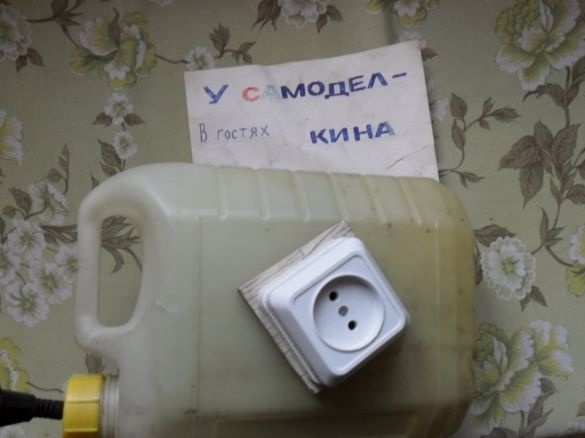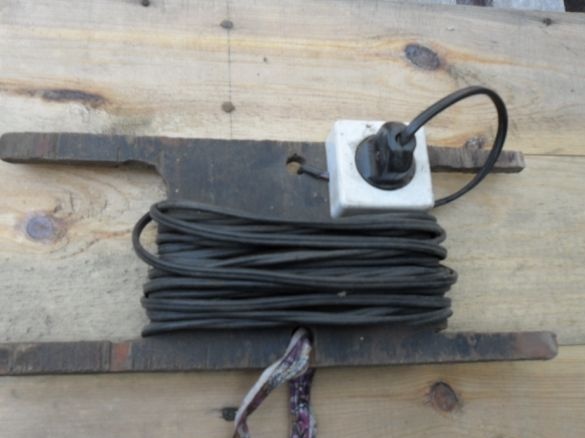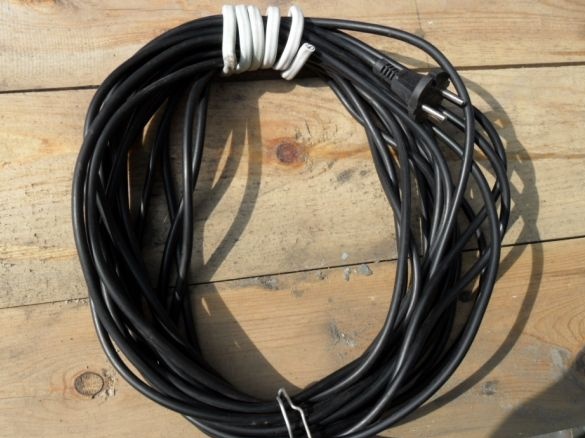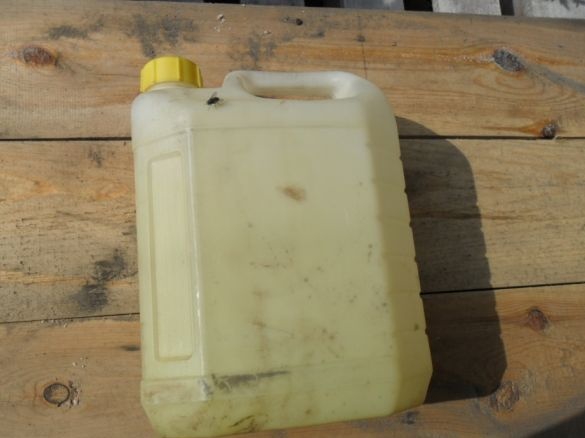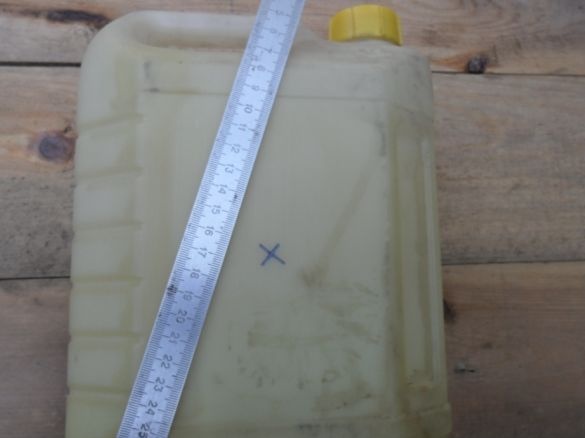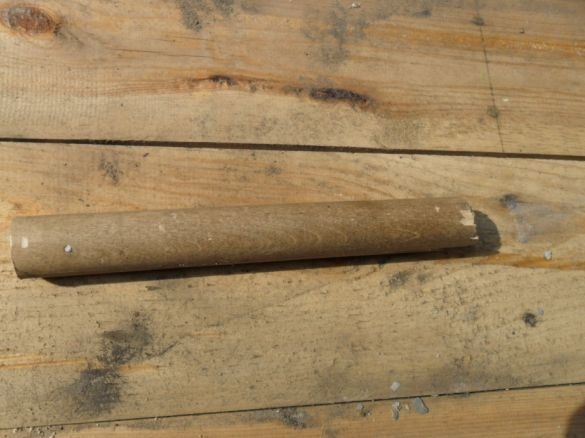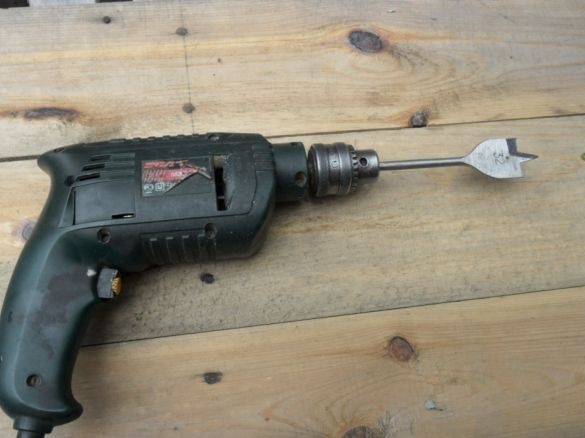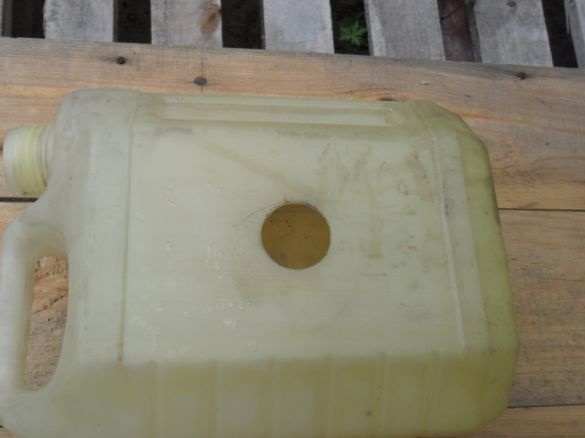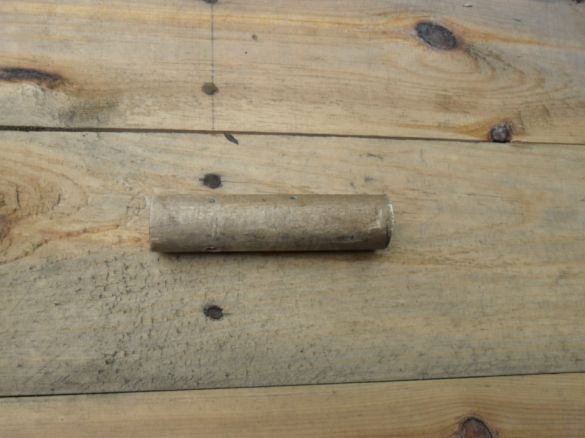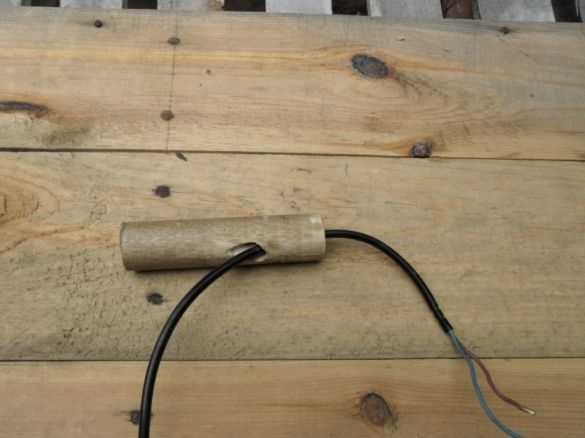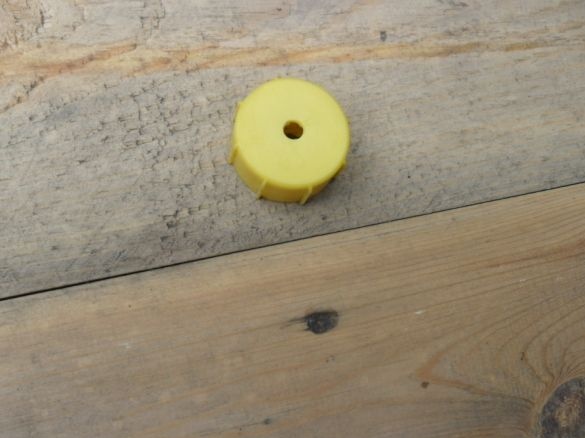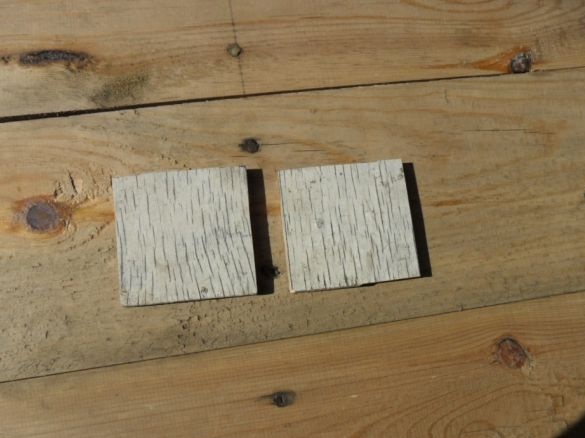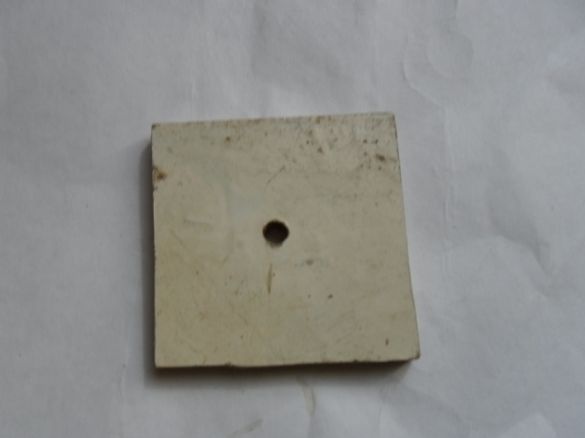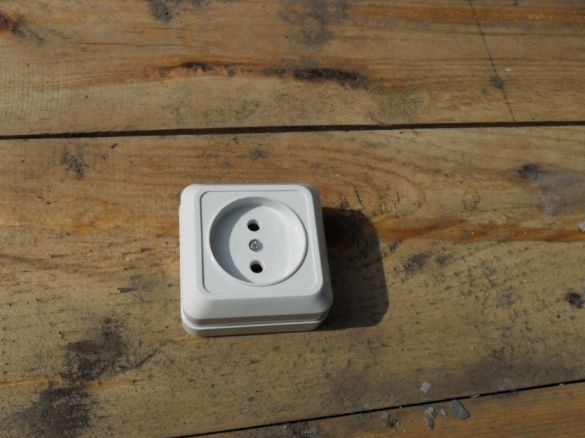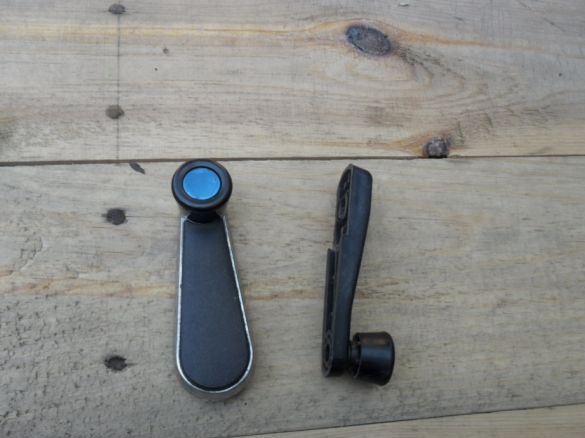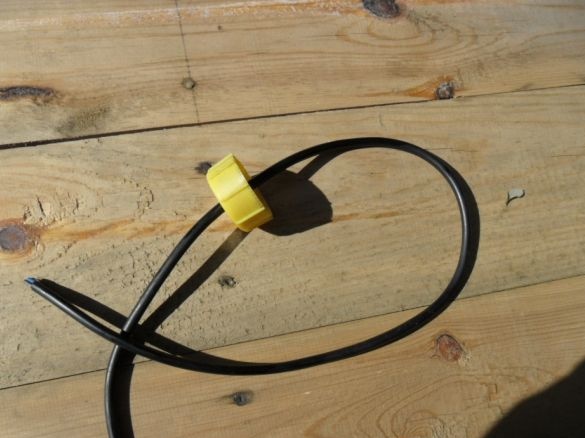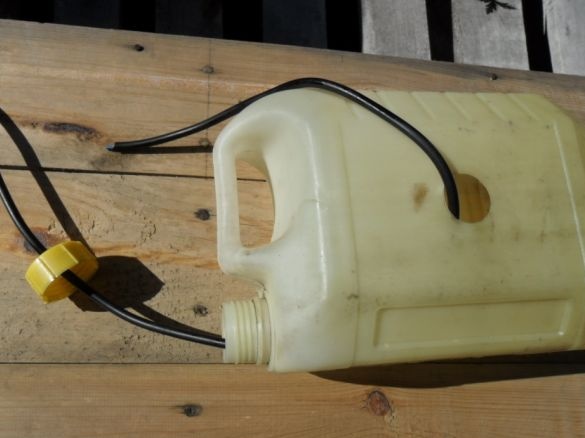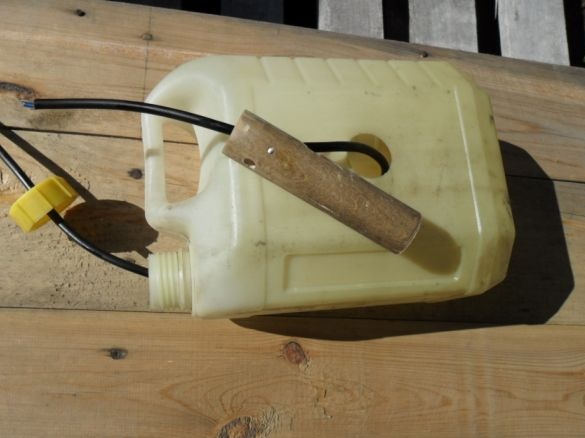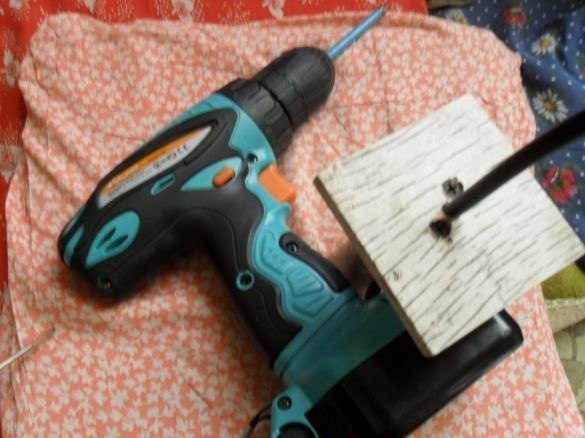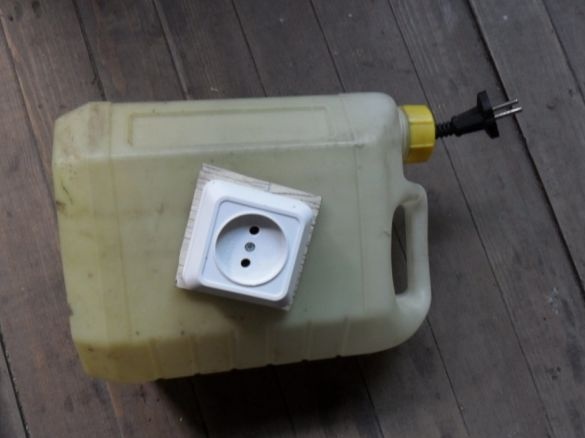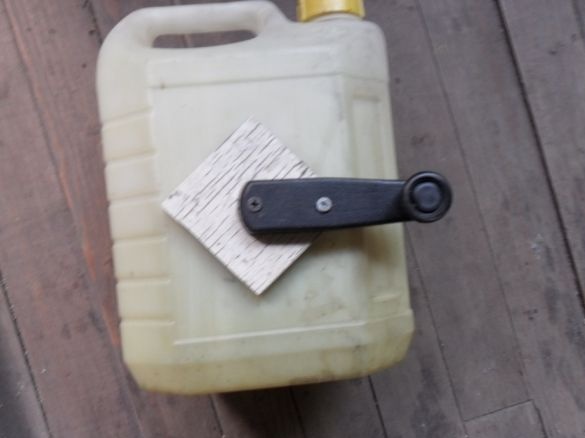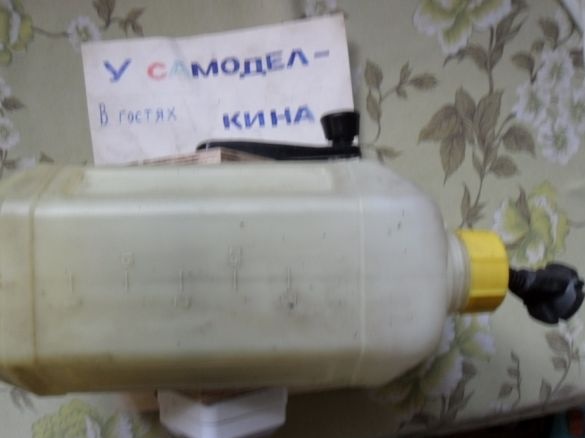Always cursing if there are work with electric tools in the yard. The fact is that the nearest power outlet is in the garage and you can’t do without an electric extension cord. I have such a carry in my household,
but there is also a negligent neighbor who regularly asks for her temporary use and never returns without reminder. The wife has several electrical extension cords from two to five meters, some of them for permanent use. During urgent work, you have to combine them and if, at the end of the work, they do not return to the place on time - another impartial notation. Therefore, seeing in the garage a faulty depth pump type Kid with a substantial supply of electric cable
and an empty four-liter plastic canister,
the thought itself was born - it makes sense to create another electrical extension cord.
He rinsed the canister, dried it and outlined the center on the sidewalls with a felt-tip pen.
As a roller for the receiving drum of an electric cable, I used a piece of a shank from a shovel.
Drilled with a pen drill in the sides of a plastic canister
two holes equal to the diameter of a wooden shovel handle.
From a piece of cuttings sawed off the roller of the receiving drum, equal to the width of the canister.
I drilled a hole diagonally in a wooden roller equal to the diameter of the electric cable,
drilled the same hole in the canister tube.
The cheeks of the receiving drum were cut from a piece of eight - millimeter plywood.
In one cheek in the center, I drilled a hole for the cable to exit.
The size of the cheeks is slightly larger than the size of the used electrical outlet.
For convenient winding of the electric cable to the receiving drum, I used the damaged Zhiguli glass lifter handle.
The assembly procedure for the electrical extension cord is as follows:
The end of the electrical cable slips into the plug,
then into the neck of the canister and discharged into one of the side openings.
Then, through the side hole of the roller, it extends to the end
and is displayed in the cheek of the drum.The cheek of the drum is screwed to the roller with screws
and an electrical outlet with a connected cable is mounted on it.
The roller is carefully inserted into the canister and, with the other end, is attracted to the second cheek with the handle.
The cork is screwed onto the canister, and the electric cable is wound onto the take-up drum with the handle. After successful technical tests, the fifteen-meter portable electric extension cord is ready for further use.


